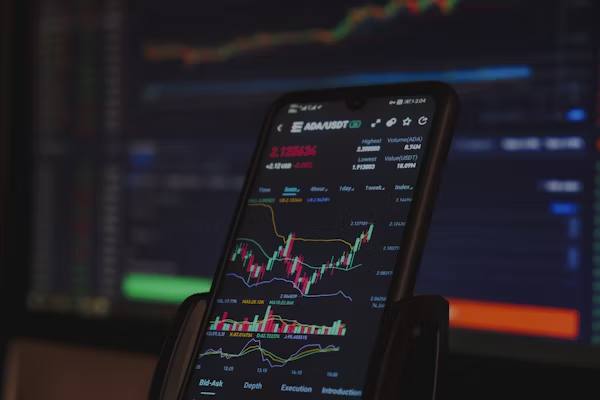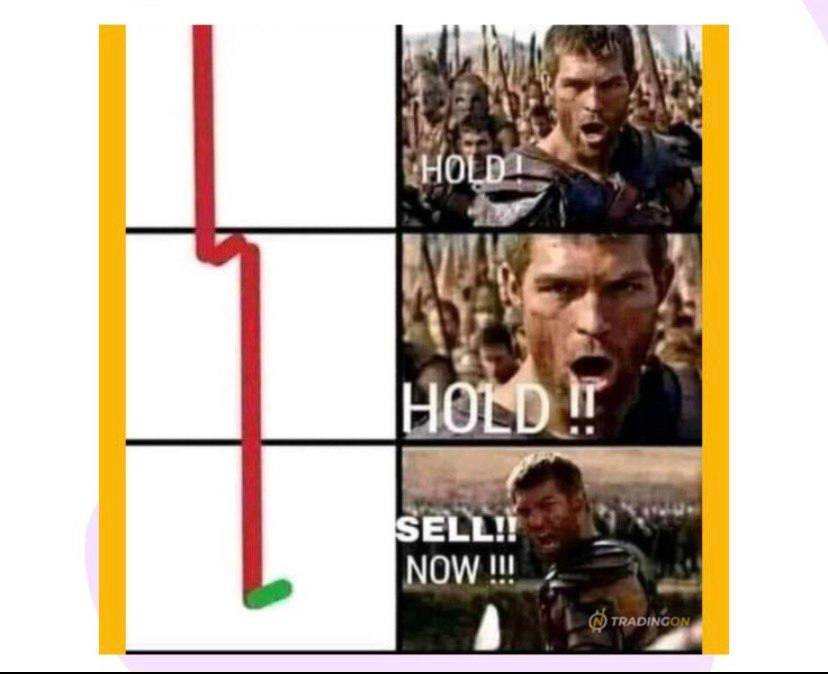
Imagine a bustling marketplace where the ebb and flow of goods tell you the story of supply and demand. Some days, the stalls overflow with fresh produce, indicating an abundance and lower prices. On other days, the stalls are nearly empty, signaling scarcity and higher prices. The cryptocurrency market operates in much the same way.
Cryptocurrency markets, known for their volatility and rapid changes, require a keen understanding of various indicators to navigate effectively. One such critical set of indicators is the inflows and outflows on crypto exchanges. These digital asset movements can reveal much about market sentiment, liquidity, and potential price changes
What Are Inflows?
Inflows refer to the amount of cryptocurrency being deposited into exchanges from external wallets. These movements can occur for various reasons, such as trading, purchasing, or selling cryptocurrencies, or simply transferring funds across different wallets. Inflows are essential metrics for assessing investor sentiment, market liquidity, and the potential for price changes in the cryptocurrency market.
When inflows are high, it often indicates increased trading activity or heightened interest in specific cryptocurrencies. This can lead to significant market trends and price shifts. For instance, during periods of high inflows, more assets are available for trading, potentially increasing the supply and exerting downward pressure on prices. Conversely, low inflows might suggest a lack of investor confidence or interest, potentially leading to a stagnant or declining market. It also indicates…
Types of Inflows
1. Deposits: Deposits occur when customers transfer funds from traditional financial institutions or fiat currencies into their exchange accounts to purchase cryptocurrencies. This type of inflow is a direct indicator of increased interest and capital inflow into the market. High levels of deposits often signal growing confidence among investors and can be a precursor to potential price increases. For example, during periods of market optimism, a surge in deposits might be observed as more people seek to buy into the rising trend, contributing to upward price momentum.
2. Transfers from External Wallets: Transfers from external wallets happen when investors move their digital assets from private or third-party wallets onto exchange platforms for trading or storage. These movements can indicate a variety of strategic decisions by investors. For instance, they might transfer assets to exchanges to capitalize on short-term trading opportunities or to rebalance their portfolios. Alternatively, such transfers can reflect a shift in investment strategies, such as moving assets to different cryptocurrencies or into stablecoins during periods of market volatility. For risk-averse investors, concerns about the security of exchange wallets may lead them to transfer assets to more secure storage options, like hardware wallets, for safekeeping after trading.
3. Trading Activity: Active trading on exchanges results in frequent movements of cryptocurrencies in and out of these platforms, reflecting real-time market sentiment and liquidity. High trading activity can be indicative of heightened interest and engagement in the market, often leading to increased price volatility. For example, during times of significant market news or events, trading volumes can spike as investors react to new information, buying or selling assets in response. This flurry of activity not only impacts prices but also provides insights into the prevailing sentiment—whether bullish or bearish—among market participants.
What Are Outflows?
Outflows represent the movement of cryptocurrencies from exchanges to external wallets. These transactions often signify that investors are moving their assets to more secure storage solutions, such as hardware wallets, or other platforms, like decentralized finance (DeFi) protocols, for various activities including lending, borrowing, or yield farming.
Outflows can also indicate a reduction in the available supply of a cryptocurrency on exchanges. When outflows are high, it often suggests that investors are less inclined to sell, potentially leading to price increases due to reduced supply. Conversely, sudden spikes in outflows might signal a sell-off or a loss of confidence among investors.
Types of Outflows
1. Withdrawals to External Wallets: One of the most common forms of outflows is the withdrawal of cryptocurrencies from exchange wallets to personal wallets. This movement often reflects investors’ desire for long-term storage or enhanced security. Personal wallets, particularly hardware wallets, offer a higher level of security by keeping assets offline and safe from potential hacks or breaches associated with online exchanges.
For instance, during periods of market uncertainty or following high-profile exchange hacks, there is often an uptick in withdrawals to external wallets as investors seek to protect their holdings. This behaviour indicates a shift towards a more cautious and long-term investment strategy, where the priority is to mitigate security risks. By moving assets to personal wallets, investors can ensure better control and protection over their digital assets.
2. Transfers to DeFi Platforms: The rise of decentralized finance (DeFi) has significantly influenced the movement of cryptocurrencies. Many investors transfer their assets from centralized exchanges to DeFi protocols to engage in activities such as lending, borrowing, staking, liquid staking, and participating in liquidity pools. DeFi platforms offer various opportunities for earning returns on crypto holdings, attracting investors who seek to maximize their gains beyond traditional exchange environments.
For example, an investor might transfer Ethereum from an exchange to a DeFi protocol to participate in a liquidity pool and earn yield farming rewards. This type of outflow signifies a strategic decision to leverage the benefits of DeFi, which include higher returns, increased flexibility, and decentralized control over assets. The growing popularity of DeFi reflects a broader trend of decentralization and innovation within the crypto ecosystem.
3. Conversions into Fiat Currency: Another significant category of outflows occurs when investors convert their cryptocurrency holdings into fiat currency, otherwise known as offramp. This process involves selling digital assets in exchange and withdrawing the resulting funds to a bank account. Conversions into fiat are often driven by a need for liquidity, profit-taking, or hedging against market volatility.
For instance, during a market rally, some investors might lock in their profits by converting a portion of their crypto holdings into fiat currency. This action provides immediate liquidity and reduces exposure to potential market downturns. On the other hand, during bearish market conditions, investors might convert to fiat to preserve capital and minimize losses. These conversions reflect the dynamic nature of investor strategies, balancing between crypto and traditional financial systems.
Why Do Inflows and Outflows Matter?
Monitoring inflows and outflows on cryptocurrency exchanges provides invaluable insights into market conditions and investor behavior. Significant inflows, for example, often herald increased trading activity and potential price volatility. By carefully analyzing these trends, traders and investors can make well-informed decisions about buying or selling assets, thereby optimizing their strategies and potentially enhancing their returns.
Take the example of Bitcoin’s remarkable bull run in late 2020. During this period, substantial outflows from exchanges were observed as investors transferred their holdings to cold storage solutions. This behavior indicated a strong belief in long-term gains, as investors were effectively reducing the supply of Bitcoin available for trading. The resultant scarcity contributed to the dramatic price surge that followed, highlighting how outflows can signal bullish market sentiment.
Conversely, in May 2021, the cryptocurrency market experienced a significant correction. A sudden spike in inflows was recorded as investors moved their assets to exchanges, anticipating a widespread sell-off. This influx of assets increased the available supply on exchanges, leading to a sharp drop in prices. This scenario underscores how inflows can serve as a precursor to bearish trends, enabling traders to anticipate market movements and adjust their positions accordingly.
Monitoring Inflows and Outflows
Several platforms, like CoinMetrics and Glassnode, provide detailed metrics on cryptocurrency inflows and outflows. These tools enable users to track the movement of assets between external addresses and exchange wallets, helping to identify patterns and trends in market activity. For instance, by analyzing the net flow of Bitcoin onto and off exchanges over a specific period, traders can gain insights into potential supply and demand shifts.
A positive net inflow of Bitcoin onto exchanges might indicate that more investors are preparing to sell, potentially leading to a price drop. Conversely, a negative net inflow suggests that more Bitcoin is being withdrawn than deposited, which could signal reduced selling pressure and a potential price increase.
How Inflows and Outflows Inform Trading Strategies
Monitoring inflows and outflows is crucial for developing effective trading strategies. Short-term traders can use these metrics to gauge immediate market sentiment and liquidity conditions. High trading volumes and rapid inflows might indicate bullish sentiment, prompting traders to take long positions. On the other hand, significant outflows could suggest profit-taking or bearish sentiment, leading traders to consider short positions or exit their current trades.

Long-term investors can also benefit from understanding these trends. Continuous net outflows from exchanges indicate increasing confidence in the long-term value of the asset, as more investors opt for secure, off-exchange storage. Persistent net inflows, however, could reflect heightened selling pressure or speculative activity, prompting long-term investors to reassess their risk exposure and portfolio composition.
Conclusion
Inflows and outflows on crypto exchanges provide critical insights into market dynamics and investor behavior. By carefully monitoring these metrics, traders and investors can make more informed decisions, anticipate market trends, and navigate the often volatile crypto market with greater confidence. While these indicators are powerful, they should be used in conjunction with other data points, such as trading volume, price trends, and on-chain data, to form a comprehensive view of the market.
Understanding these concepts can significantly enhance your crypto journey, making you a more informed and confident investor.
Stay in the know for all things Web3! Subscribe to our newsletter and become part of our vibrant community. Get exclusive updates and never miss any exciting developments.
Follow Us on All Platforms



